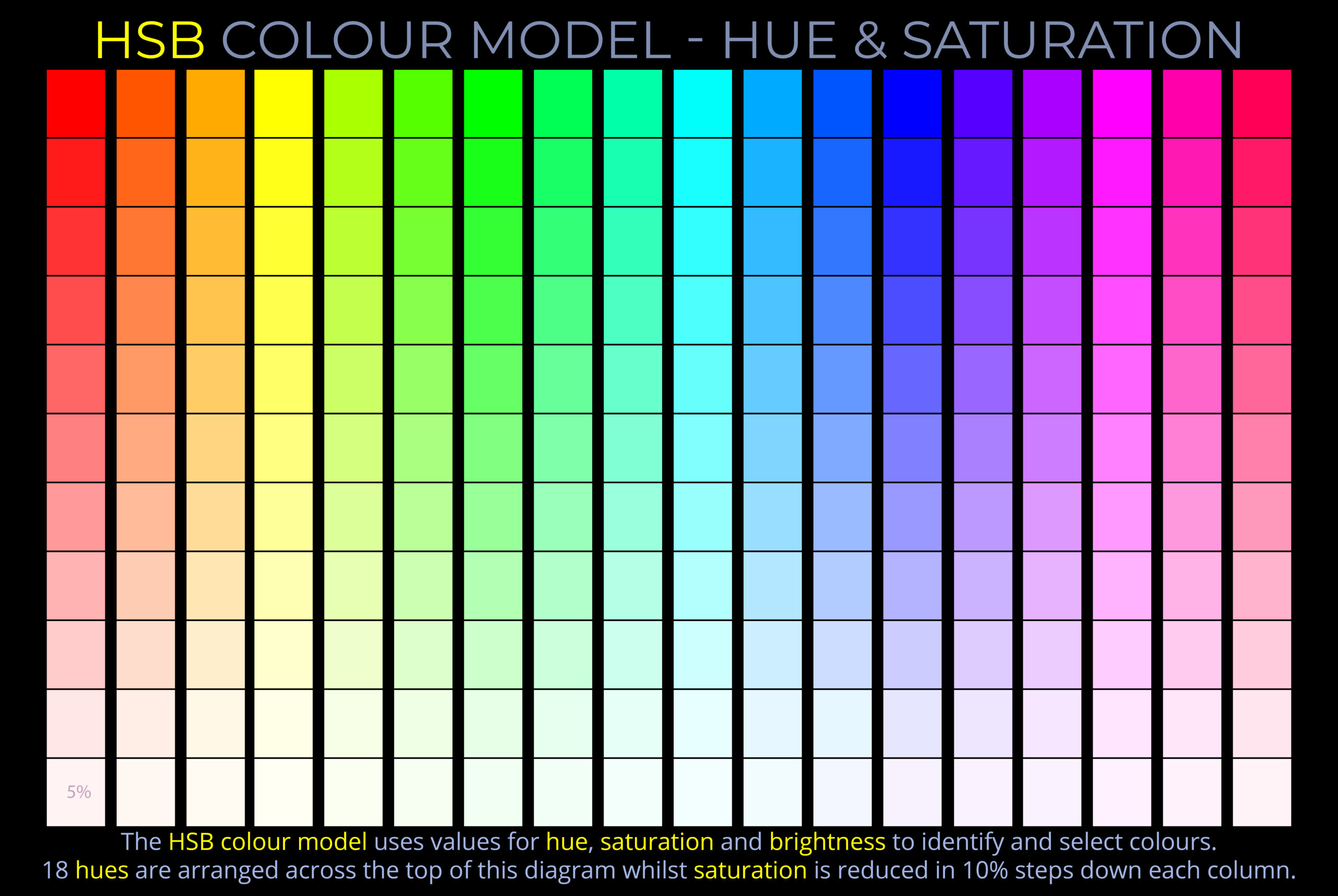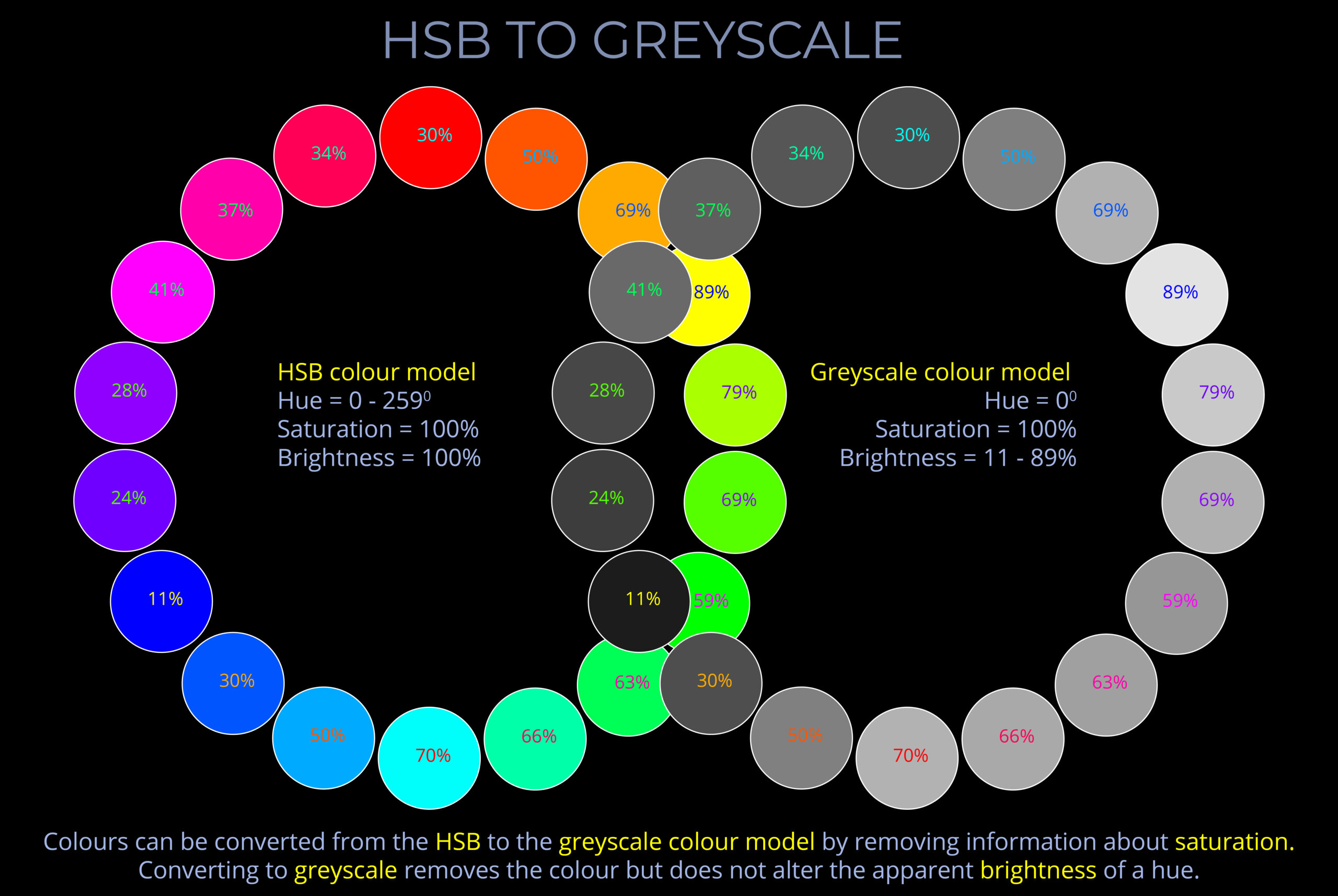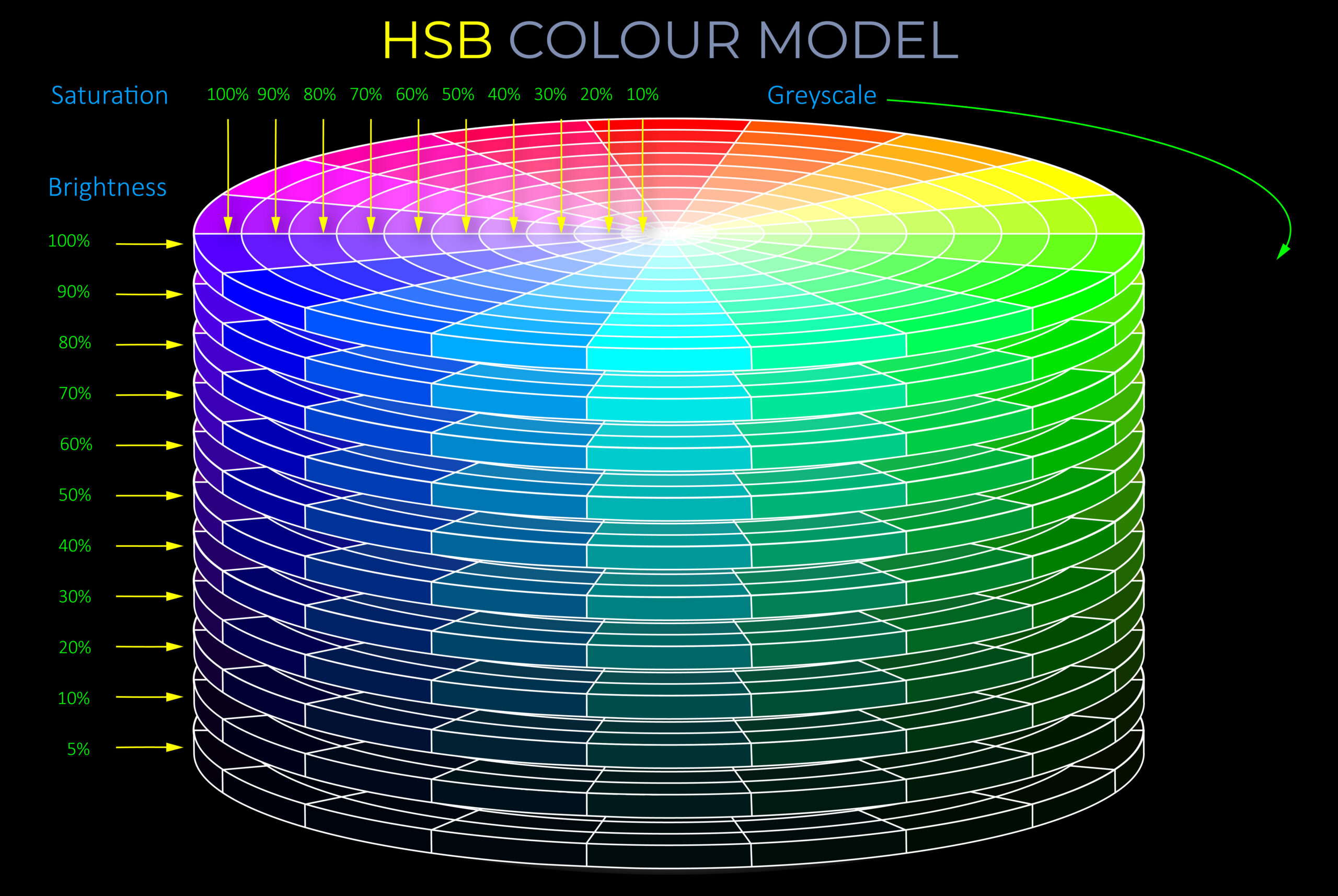Achromatic means without colour so refers to surfaces or objects that appear white, grey or black. Achromatic colours lack hue or saturation but can be described in terms of their brightness.
- Near-neutral colours such as tints, shades or tones are often considered achromatic.
- The lightest shades of pastel colours can be nearly achromatic, but they may still exhibit a subtle hint of hue.
- Deep shadows and the world as it appears at night can appear achromatic, but may still retain some colour.
- When mixing paint, achromatic colours are produced by adding black and/or white until the original colour is fully desaturated.
- Achromatic colours are produced on digital screens by mixing red, green and blue light in equal proportions.
- The RGB colour model produces achromatic colours when all three components of a colour have the same value. So the RGB colour values R = 128, G = 128, B = 128 produce a middle grey, which is an achromatic colour.
- The way achromatic colours appear to an observer often depends on adjacent more saturated colours. So, next to a bright red couch, a grey wall may appear to have a slightly greenish tint due to the phenomenon known as simultaneous contrast.
- Achromatic means without colour so refers to surfaces or objects that appear white, grey or black. Achromatic colours lack hue or saturation but can be described in terms of their brightness.
- When mixing paint, achromatic colours are produced by adding black and/or white until the original colour is fully desaturated.
- Achromatic colours are produced on digital screens by mixing red, green and blue light in equal proportions.


